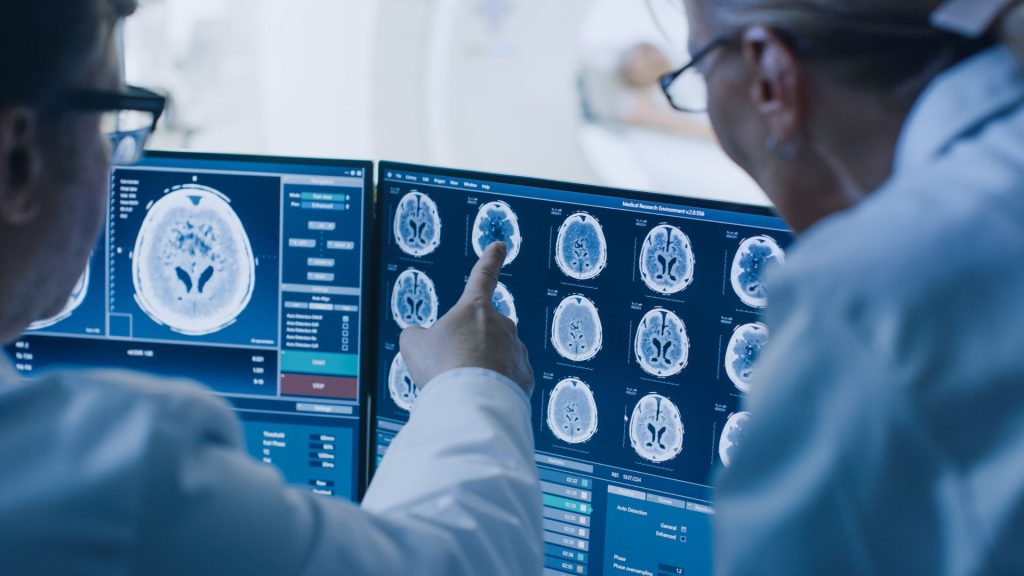
Need help understanding the facts about animal experiments? There are many resources available – academic papers, systematic reviews and conference proceedings – that provide credible references as to why animals are not good models for human medicine.
The following list provides links to such items we believe can assist you.

TITLE: Understanding Traumatic Brain Injuries in Military Personnel: Investigating the Dynamic Interplay of the Cerebrospinal Fluid and Brain During Blasts.
SUMMARY: Incidents of TBI among military personnel may arise during or after their service. Due to ethical concerns surrounding animal experimentation, researchers have sought alternative methods for studying TBIs. Computational simulations are increasingly used to study the pathophysiology of traumatic brain injuries among US military personnel. This approach allows for investigation without ethical concerns surrounding live subject testing.
AUTHORS: Frankini E, Basile E J, Syed F, et al
PUBLICATION: Cureus
YEAR: 2023
TITLE: Animal-derived products in science and current alternatives
AUTHORS: Anna C Duarte et al
PUBLICATION: Biomaterials Advances
YEAR: 2023
LINK: www.sciencedirect.com/science/article/pii/S2772950823001516?via%3Dihub
TITLE: Biofidelic dynamic compression of human cortical spheroids reproduces neurotrauma phenotypes
SUMMARY: Scientists have created a 3D lab model of a human brain, using it to better understand and study traumatic brain injuries. By simulating injury, they found the model showed signs of damage similar to a real brain, which could help them develop future treatments.
AUTHORS: A Shoemaker
PUBLICATION: Disease Models & Mechanisms
YEAR: 2021
LINK: https://journals.sagepub.com/doi/full/10.1177/0269881116689260
TITLE: Confusing preclinical (predictive) drug screens with animal ‘models’ of psychiatric disorders, or ‘disorder-like’ behaviour, is undermining confidence in behavioural neuroscience.
Summary: Preclinical screens for psychotropic drugs are often mistakenly used as animal models of psychiatric disorders or to study disorder-like behaviors. This misunderstanding contributes to poor translation and undermines confidence in behavioral neuroscience. The author of this editorial discusses why interpreting results from these procedures is questionable and proposes that describing abnormal rodent behavior as a model of a psychiatric disorder without evidence-based justification should be considered unacceptable in their journal, the Journal of Psychopharmacology.
AUTHORS: SC Stanford
PUBLICATION: Journal of Psychopharmacology
YEAR: 2017
LINK: https://journals.sagepub.com/doi/full/10.1177/0269881116689260
TITLE: Are researchers moving away from animal models as a result of poor clinical translation in the field of stroke? An analysis of opinion papers.
Summary: Despite decades of research using animals to develop pharmaceutical treatments for patients who have had a stroke, few therapeutic options exist. The vast majority of interventions successful in preclinical animal studies have turned out to have no efficacy in humans or to be harmful to humans. In view of this, we explore whether there is evidence of a move away from animal models in this field.
AUTHORS: Pandora Pound and Rebecca Ram
PUBLICATION: British Medical Journal
YEAR: 2020
TITLE: Ethical and Welfare Implications of Genetically Altered Non-Human Primates for Biomedical Research
Summary: Breakthroughs in gene editing technologies have made it feasible to create genetically altered (GA) non-human primate (NHP) models of disease. This area of research is accelerating, particularly in China, Japan and the USA, and could lead to an increase in NHP use globally. The hope is that genetic models in animal species closely related to humans will significantly improve understanding of neurological diseases and validation of potential therapeutic interventions, for which there is a dire need. However, the creation and use of GA NHPs raises serious animal welfare and ethical issues, which are highlighted in this publication.
AUTHORS: Mark J. Prescott
PUBLICATION: Journal of Applied Animal Ethics Research
YEAR: 2020
TITLE: From Mice to Monkeys? Beyond Orthodox Approaches to the Ethics of Animal Model Choice.
SUMMARY: New genome-editing tools enable increased use of larger mammals like primates, pigs, and dogs in biomedical research. This paper explores ethical concerns about this shift, comparing scientific guidelines and philosophical perspectives on animal use and emphasizing the importance of addressing ethical questions alongside scientific considerations in biomedical research.
AUTHORS: Rebecca L. Walker and Matthias Eggel
PUBLICATION: Animals 2020
YEAR: 2020
TITLE: The Relevance of In Silico, In Vitro and Non-human Primate Based Approaches to Clinical Research on Major Depressive Disorder
SUMMARY: Major depressive disorder (MDD) is the most severe form of depression and a leading global cause of disability. To understand MDD better, researchers evaluated the effectiveness of various research methods. They found that studies using human-based in vitro or in silico approaches received more citations and were considered more relevant in subsequent research papers than non-human primate (NHP) studies. These human-based methods are also more cost-effective and ethically acceptable, suggesting a need to reconsider traditional animal-based approaches in medical research and promote innovative human-relevant techniques.
AUTHORS:Constanc¸a Carvalho et al
PUBLICATION: Alternatives to Laboratory Animals
YEAR: 2019
LINK:https://journals.sagepub.com/doi/pdf/10.1177/0261192919885578
TITLE: Opinion Versus Evidence for the Need to Move Away from Animal Testing
SUMMARY: Science relies on facts and discussions, which can sometimes mix with opinions, especially in controversial or uncertain situations. Evidence-based approaches, like systematic reviews and meta-analyses, are becoming more common in toxicology to objectively and transparently identify and evaluate facts. While animal experiments have contributed significantly to scientific knowledge and medical advancements, they have limitations, including reproducibility issues, inadequate reporting, and challenges in predicting human responses. Addressing these limitations would require substantial resources, prompting the need for a new approach to ensure safety and develop new products and therapies.
AUTHOR: Thomas Hartung
PUBLICATION: ALTEX
YEAR: 2017
TITLE: Inappropriate modeling of chronic and complex disorders: How to reconsider the approach in the context of predictive, preventive and personalized medicine, and translational medicine
SUMMARY: Preclinical investigations, including animal modeling, form the foundation for clinical studies and patient care. Predictive, preventive, and personalized medicine (PPPM) seeks to customize treatment by identifying early signs of disease through advanced technologies. Inaccurate modeling of complex disorders can hinder PPPM and translational medicine progress. This study questions the validity of animal models, highlights their limitations in drug development, and suggests the need for better surrogates to improve medical research and healthcare outcomes.
AUTHORS: Soroush Seifirad and Vahid Haghpanah
PUBLICATION: EMPA Journal
YEAR: 2019
LINK: https://link.springer.com/article/10.1007/s13167-019-00176-z
TITLE: Is it Time for Reviewer 3 to Request Human Organ Chip Experiments Instead of Animal Validation Studies
SUMMARY: Animal studies have been used to validate in vitro research results in scientific articles and grant applications. However, recent advancements in human organ-on-a-chip technology have demonstrated their ability to mimic human physiology, disease states, and drug responses more accurately than animal models. This raises questions about the continued need for animal testing in research and its ethical implications, with this article discussing the advantages and disadvantages of organ-on-a-chip models compared to animal models for the scientific community to consider.
AUTHORS: Donald E Ingber
PUBLICATION: Advanced Science
YEAR: 2020
LINK: https://onlinelibrary.wiley.com/doi/10.1002/advs.202002030
TITLE: Advancing nonclinical innovation and safety in pharmaceutical testing
Summary: Nonclinical tests play a crucial role in assessing the safety of new drugs, but their effectiveness in predicting human responses needs improvement. To enhance this, stakeholders in drug development are promoting human-based in vitro and in silico methods, which allow scientists to directly study how drugs interact with human cells and tissues. Recommendations include neutral regulations for testing, increased funding for human-based approaches, support for existing initiatives, evaluation of new methods using human data, guidelines for procuring human cells and tissues, and more training and education in human-based approaches.
AUTHORS: Elizabeth J.Baker et al
PUBLICATION: Drug Discovery Today
YEAR: 2019
LINK: https://www.sciencedirect.com/science/article/pii/S1359644618302642?via%3Dihub
TITLE: The future of Parkinson’s disease research: A new paradigm of human specific investigation is necessary… and possible
SUMMARY: To date, approaches to drug discovery for PD have resulted in symptomatic therapies for the motor manifestations and signs associated with neurodegeneration but have failed to identify preventive or curative therapies. This failure mainly originates from the persistence of major gaps in our understanding of the specific molecular basis of PD initiation and progression. New approach methodologies (NAMs) hold the potential to advance PD research while facilitating a move away from animal- based research. This publication reports a workshop involving NAM experts in the field of PD and neurodegenerative diseases, who discussed and identified a scientific strategy for successful, human-specific PD research.
AUTHORS: M. Cassotta et al
PUBLICATION: ALTEX
YEAR: 2022
LINK: https://www.altex.org/index.php/altex/article/view/2450/version/2512
TITLE: Poor Translatability of Biomedical Research Using Animals — A Narrative Review
Summary: The translation of drugs from animal testing to human treatments has a high failure rate of over 92%, primarily due to unexpected safety issues and lack of efficacy revealed in human trials but not in animal tests. Innovative tools like organs-on-chips show promise in predicting safety events before clinical trials and assessing drug efficacy. This review discusses various disease areas where animal models have failed to provide effective treatments and suggests how these more human-relevant approaches can be applied to address this issue.
AUTHORS: L Marshall et al
PUBLICATION: Alternatives to laboratory Animals
YEAR: 2023
LINK: www.altex.org/index.php/altex/article/view/2450/version/2512
TITLE: Human disease models in drug development
Summary: This review highlights a shift in biomedical research towards human disease models due to the frequent failures in drug development. It points out the limitations of animal models, which, while widely used, often fail to accurately predict human responses. To address this gap, researchers are developing bioengineered human disease models that closely mimic clinical conditions. The review discusses the use of these models in preclinical and clinical studies, particularly focusing on organoids, bioengineered tissue models, and organs-on-chips.
AUTHORS: Anna Loewa, James J. Feng & Sarah Hedtrich
PUBLICATION: Nature Reviews Bioengineering
YEAR: 2023

TITLE: Alzheimer’s Disease, and Breast and Prostate Cancer Research: Translational Failures and the Importance to Monitor Outputs and Impact of Funded Research
SUMMARY: Dementia and cancer are common in Western countries. Scientists have been studying Alzheimer’s disease, breast cancer, and prostate cancer, but animal models used in research may not fully represent human diseases. New tools and interdisciplinary approaches are being used, and it’s important to monitor the impact of biomedical research. This publication discusses some of the issues underlying translational failure to these diseases and describes how indicators could be applied to retrospectively measure outputs and impact of funded biomedical research.
AUTHORS: Francesca Pistollato et al
PUBLICATION: Animals 2020
YEAR: 2020
TITLE: Why are Validated Alternatives Not Being used to Replace Animal Tests?
Summary: There is high hope for the development and validation of alternative test methods to replace animal testing for chemical safety assessments. However, the success of these efforts depends on recognizing the limitations of using laboratory animals as models for humans and embracing directly human-relevant alternatives while adhering to existing laws and regulations.
AUTHORS: Michael Balls
PUBLICATION: Alternatives to Laboratory Animals
YEAR: 2018
LINK: https://journals.sagepub.com/doi/abs/10.1177/026119291804600105
TITLE: Modeling the Human Bone–Tumor Niche: Reducing and Replacing the Need for Animal Data
Summary: Understanding the complex interactions in the bone-tumor microenvironment, where cancer often spreads, is vital for developing new treatments. Traditional animal models have been used for this, but alternative systems are emerging that replicate the bone environment, enabling the study of cancer metastasis and tumor growth alongside bone turnover. These alternatives include using synthetic materials, fresh human bone samples, and mathematical modeling, offering non-animal testing options to improve our understanding of the human bone-tumor environment.
AUTHORS: Srinivasa R Rao et al
PUBLICATION: JBMR PLUS
YEAR: 2020
LINK: https://asbmr.onlinelibrary.wiley.com/doi/epdf/10.1002/jbm4.10356
TITLE: Australian Regulation of Animal Use in Science and Education: A Critical Appraisal
SUMMARY: Australia’s regulation of animal use in science and education emphasizes the 3Rs (reduction, refinement, and replacement), but concerns arise as animal use increases. This article assesses the current framework, highlighting strengths and recommending improvements for better alignment with international best practices. The suggested enhancements include more transparency, improved competency standards, a central regulatory authority, and increased incentives for non-animal research alternatives.
AUTHORS: Aaron C Timoshanko, Helen Marston, Brett A Lidbury
PUBLICATION: Institute for Laboratory Animal Research (ILAR)
YEAR: 2016
LINK: https://academic.oup.com/ilarjournal/article/57/3/324/3796585
TITLE: Some Reasons Why Preclinical Studies of Psychiatric Disorders Fail to
Translate: What Can Be Rescued from the Misunderstanding and Misuse of Animal ‘Models’?
SUMMARY: The failure of animal models in translating findings to humans is a serious issue in preclinical biomedical research, threatening its credibility. This article discusses the need for urgent attention to this problem, particularly in the context of psychiatric disorders like depression, highlighting common flawed assumptions and the importance of interpreting findings realistically and evidence-based to align with research on human psychiatric problems.
AUTHORS: Clare Stanford
PUBLICATION: Alternatives to Laboratory Animals
YEAR: 2020
TITLE: The Educational Efficacy of Humane Teaching Methods: A Systematic Review of the Evidence
SUMMARY: Harmful animal use persists in education despite the availability of humane teaching methods, which have legal, ethical, and economic benefits and have been shown to be equally or more effective in improving student knowledge and skills. A systematic review of 50 studies revealed that in 90% of cases, humane teaching methods were as effective or even more effective than harmful animal use, suggesting there is no valid educational reason to continue using animals in this context.
AUTHORS: Miriam A Zemanova and Andrew Knight
PUBLICATION: Animals
YEAR: 2021
TITLE: What’s not in the news headlines or titles of Alzheimer disease articles? #InMice
SUMMARY: There are currently no medicines that can really help stop or slow down Alzheimer’s disease (AD). The drugs that are available only treat some of the symptoms in a few patients, and there have been many failed attempts to find new treatments, mostly because the tests on animals didn’t work well for predicting what would happen in people. This has cost an enormous amount of money, and success in developing new drugs for most diseases is very low.
AUTHORS: Marcia Triunfol and Fabio C. Gouveia
PUBLICATION: Plos Biology
YEAR: 2021
LINK: https://journals.plos.org/plosbiology/article?id=10.1371/journal.pbio.3001260
TITLE: Replacement Strategies for Animal Studies in Inhalation Testing
SUMMARY: The lung morphology and physiology of commonly used animal species differs from that of human lungs, and the realistic inhalation exposure of animals is challenging. In vitro and in silico methods can assess important aspects of the in vivo effects, namely particle deposition, dissolution, action at, and permeation through, the respiratory barrier, and pharmacokinetics. This review discusses the limitations of animal models and exposure systems and proposes in vitro and in silico techniques that could, when used together, reduce or even replace animal testing in inhalation testing in the future.
AUTHORS: Eleonore Fröhlich
PUBLICATION: Sci
YEAR: 2021
TITLE: The role of systematic reviews in identifying the limitations of preclinical animal research, 2000 – 2022
Summary: Evidence from systematic reviews
AUTHORS: Ritskes-Hoitinga M, Pound P
PUBLICATION: JLL Bulletin
YEAR: 2022
TITLE: The Use of Simulators for Teaching Practical Clinical Skills to Veterinary Students — A Review
Summary: This review examines the available literature regarding the use of simulation and simulators for teaching practical day one competences to veterinary students. Scientific databases were searched and 73 relevant articles were reviewed.
AUTHORS: Helen.R Braid
PUBLICATION: Alternatives to Laboratory Animals.
YEAR: 2022
LINK: https://journals.sagepub.com/doi/full/10.1177/02611929221098138
TITLE: Modeling brain development and diseases with human cerebral organoids
Summary: This review discusses the importance of understanding human brain development and neurological disorders in neurobiology. It highlights that current knowledge relies heavily on studies in rodents due to limited access to human and non-human primate brain tissues. However, human-specific aspects of neural development cannot be fully explored using animal models. The review emphasizes the role of brain organoids, which have rapidly advanced thanks to stem cell technologies, in decoding human brain development and uncovering brain disease pathology. It covers recent developments in brain organoid technology, discusses its limitations, potential applications, and future prospects.
PUBLICATION: Current Opinion in Neurobiology
YEAR: 2021
LINK: https://www.sciencedirect.com/science/article/abs/pii/S0959438820301331
TITLE: A framework for establishing scientific confidence in new approach methodologies
Summary: This paper underscores the importance of establishing reliable and efficient processes to instill trust in New Approach Methodologies (NAMs) for potential regulatory use in assessing human health effects. It stresses that NAMs should be appropriate for their intended purpose, dependable, and reflective of human biology. The key factors include independent evaluation and transparent communication among NAM developers, regulators, and industry stakeholders. Rather than simply comparing NAM results to traditional animal tests, the focus should be on their biological relevance, mechanistic understanding, and their capacity to guide health-protective decisions. The paper introduces a framework comprising five crucial elements: fitness for purpose, human biological relevance, technical characterization, data integrity and transparency, and independent review. Implementing this framework on a global scale would expedite the development and adoption of NAMs, not only for pesticides and industrial chemicals but also for various other types of chemicals and ecotoxicological assessments.
AUTHORS: Anna J Van der Zalm et al
PUBLICATION: Archives of Toxiciology
YEAR: 2022
TITLE: Animal-derived products in science and current alternatives
Summary: Animals continue to be widely used in basic research. Their use comprises not only in vivo experiments with animal models, but also the production of a variety of supplements and products of animal origin for cell and tissue culture, cell-based assays, and therapeutics. The animal-derived products most used in basic research are fetal bovine serum (FBS), extracellular matrix proteins such as Matrigel™, and antibodies. However, their production raises several ethical issues regarding animal welfare. Additionally, their biological origin is associated with a high risk of contamination, resulting, frequently, in poor scientific data for clinical translation.
AUTHORS: Anna C Duarte et al
PUBLICATION: Biomaterials Advances
YEAR: 2023
LINK: www.sciencedirect.com/science/article/pii/S2772950823001516?via%3Dihub
TITLE: The (misleading) role of animal models in drug development
Summary: Animals like mice and rats have long been used in medical research to help understand disease and test potential new treatments before human trials. However, while animal studies have contributed to important advances, too much reliance on animal models can also mislead drug development. This article explains for a general audience how animal research is used to develop new medicines, its benefits and limitations, and how more accurate and humane techniques—alternatives to animal testing—could improve this process.
AUTHOR: Thomas Hartung
PUBLICATION: Frontiers
YEAR: 2024
LINK: https://doi.org/10.3389/fddsv.2024.1355044